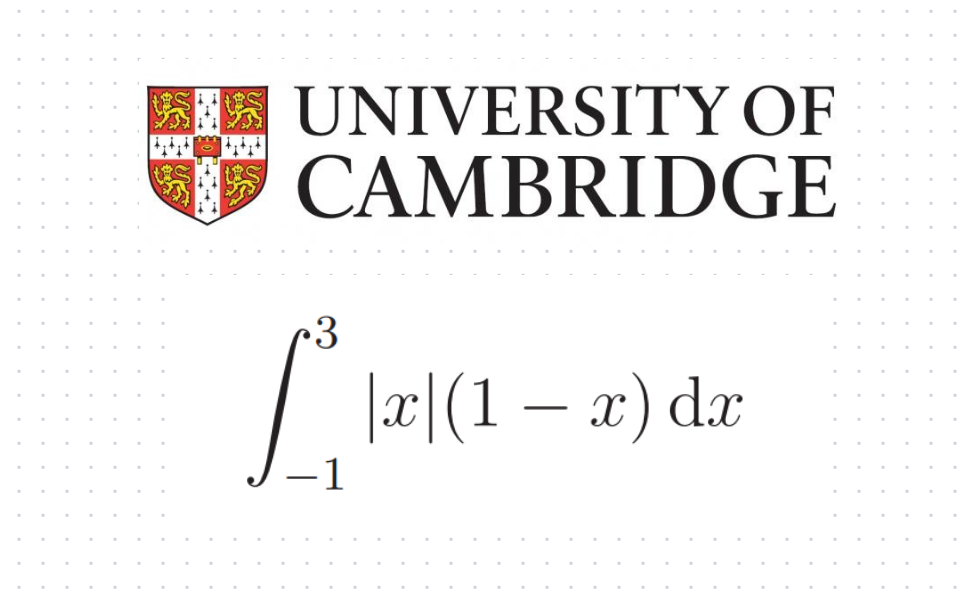Solving an Integral Involving the Absolute Value Function: A Challenge from Cambridge University
Core Concepts
The absolute value function poses a challenge for elementary integration techniques, but can be solved by considering the function's graph.
Abstract
The content discusses a mathematical problem involving the integration of an absolute value function, which is a common challenge in calculus. The author explains that the absolute value function does not follow any elementary integration rules, but suggests that the problem can be solved by considering the graph of the function.
The key highlights and insights from the content are:
The absolute value function is a non-elementary function, meaning it does not follow the standard integration rules.
To solve the integral involving the absolute value function, the author suggests considering the graph of the function, rather than relying on traditional integration techniques.
The content is presented as a problem or challenge from Cambridge University, indicating that it is a complex mathematical problem that may be encountered in advanced calculus or mathematical competitions.
Can You Solve This Integral From Cambridge University?
Stats
No specific data or metrics are provided in the content.
Quotes
No direct quotes are present in the content.
Key Insights Distilled From
by Bella Lockha... at medium.com 05-09-2024
https://medium.com/intuition/can-you-solve-this-integral-from-cambridge-university-752d3dbdb430
Deeper Inquiries
How can the graph of the absolute value function be used to solve the integral problem?
The graph of the absolute value function can be used to solve the integral problem by breaking down the function into two separate cases based on the behavior of the function. When integrating the absolute value function, we can consider the regions where the function is positive and negative separately. By analyzing the graph of the absolute value function, we can identify the points where the function changes sign and adjust our integration accordingly. This approach allows us to handle the non-elementary nature of the absolute value function and effectively solve the integral problem.
What are some other non-elementary functions that pose similar challenges for integration, and how can they be approached?
Other non-elementary functions that pose challenges for integration include functions involving trigonometric, exponential, and logarithmic terms. For example, functions like sin(x), e^x, and ln(x) do not have simple integration rules and require more advanced techniques to solve. These functions can be approached using methods such as substitution, integration by parts, trigonometric identities, and special functions like the error function. By applying these techniques and carefully analyzing the behavior of the function, we can effectively integrate non-elementary functions and solve complex integral problems.
What real-world applications or implications might this type of integral problem have in fields like physics, engineering, or other scientific disciplines?
The ability to solve integral problems involving non-elementary functions, such as the absolute value function, is crucial in various scientific disciplines like physics and engineering. In physics, these types of integrals often arise when calculating areas under curves representing physical quantities or when determining the total change in a system over time. For example, in mechanics, integrating non-elementary functions helps in analyzing the motion of objects and predicting their trajectories. In engineering, integral problems with non-elementary functions are essential for designing systems, optimizing processes, and modeling complex phenomena. By mastering the techniques to solve these integrals, scientists and engineers can make accurate predictions, develop innovative solutions, and advance our understanding of the natural world.
0
